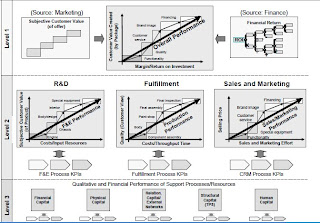I was going to talk about the nature of a crisis from the aggregation of terms (concepts) derived using automated semantic analysis of the day by day newly indexed web pages in a year long research programme using The University of East Anglia's issue over the quality of scientific rigour. This is an interesting study that allows us to see the differences in concepts as they change in frequency month by month.
In recent weeks, with my colleagues at Klea and Publicasity I have been able to monitor the nature of the Toyota issues as concepts arise day by day. Now we can see not just the anatomy of a crisis month by month but the DNA of an issue emerging every day. Today, I noted that the word humphrey had become significant to Toyota and by using Goole to backwards verify the relevance of the word could see the provenance of the concept as it is affecting the Toyota corporate brand. It is the sort of insight that a corporate affairs manager (or her agency) or academic researcher might find valuable.
These are the kind of data that, one would hope, is pretty well bog standard among universities with an interest in reputation management, corporate and brand reputation, public relations etc. Using these data and matching them the Toyota's responses for the press and through social media etc, is now really easy and allows the researcher to identify:
Cause and effect across different media:
Fig 1 Share of alerts by web media for Toyota week to 14 Feb 2010 (courtesy Publicasity)
Or by sentiment:
Fig 2 Share of alerts by automated PoS (Part of Speech) sentiment analysis for Toyota week to 14 Feb 2010 (courtesy Publicasity)
Or perhaps one might want to compare these effects against other third party responses such as share price:
Fig 3 Five day share price taken from Yahoo Finance.
What made me pause was the latter chart.
I would not mind betting, that there are people in Toyota who would be more than happy if all this damaging content online would just go away.
What would happen if the 152 million web pages mentioning Toyota indexed by Google or the billion pages indexed by Yahoo or the 278 million pages indexed by Bing just vanished?
What if only the printed pages in newspapers, magazines, radio, television, posters and brand promotion was the visible evidence of the company and Toyota was erased from the internet (and would the media find this comfortable or even part of its approach to news distribution - it seems not)?
If the 'Toyota Way' was not in so much trouble and the distribution of coverage in the media was more competitive, would the internet presence be more interesting?
Fig 4. Woldwide online media distribution over the last week for Kia Motors (courtesy Publicasity) .
Would Toyota forego the two million visits to its North American web site each month?
Perhaps it would be happy not to be mentioned in 140,000 blog posts or even the 800 pages and groups it got covered in Facebook during a typical (2009) February.
These pages (and many others) represent a lot of brand exposure.They create the opportunities for those Google ads to pop up when people think about cars when browsing and much, much more.
What we are discovering is that these pages online are useful, give competitive advantage and are really an asset. But that is not how Toyota sees it? In reality, once engaged the social media is mostly helpful.
The issue here is who owns the online asset? Does the company? It would seem that this is an asset that does not appear on the Balance sheet. In fact its not a line item (PDF). Is this because the head of, well, corporate affairs/public relations has not made it clear to the Board that online presence is an asset. It is an asset that can be both positive and negative on the balance sheet. Last year the line item would have been part of prepaid expenses and other current assets.................................................... $6,439 million.
This broad sweep of assets is part of total current assets of $115 bn. So not much as a proportion of the whole. There is no line item for brand assets - try running a company without them! But that aside, an asset never-the-less.
We do get a better view from Juergen H. Daum who has examined the intangible assets (PDF) of Toyota.
Relationship capital is now hugely internet mediated as are all the other intellectual properties and online relationships.
There is no escaping it: the internet asset is very significant for organisations.
So, who is the manager responsible for this asset?
If it is the PR manager, so much to the good.
If not, the responsible person will ask the PR manager to 'fix' the bad online content or get more coverage to force criticism 'below the line'.
My talk to Euprera will be a question: are we teaching, researching and supporting the PR industry to be asset managers or functionaries?
If, PR is at the 'Fix' end of asset management, it has no future - this is not even agentry, it's mostly computer programmes.


No comments:
Post a Comment